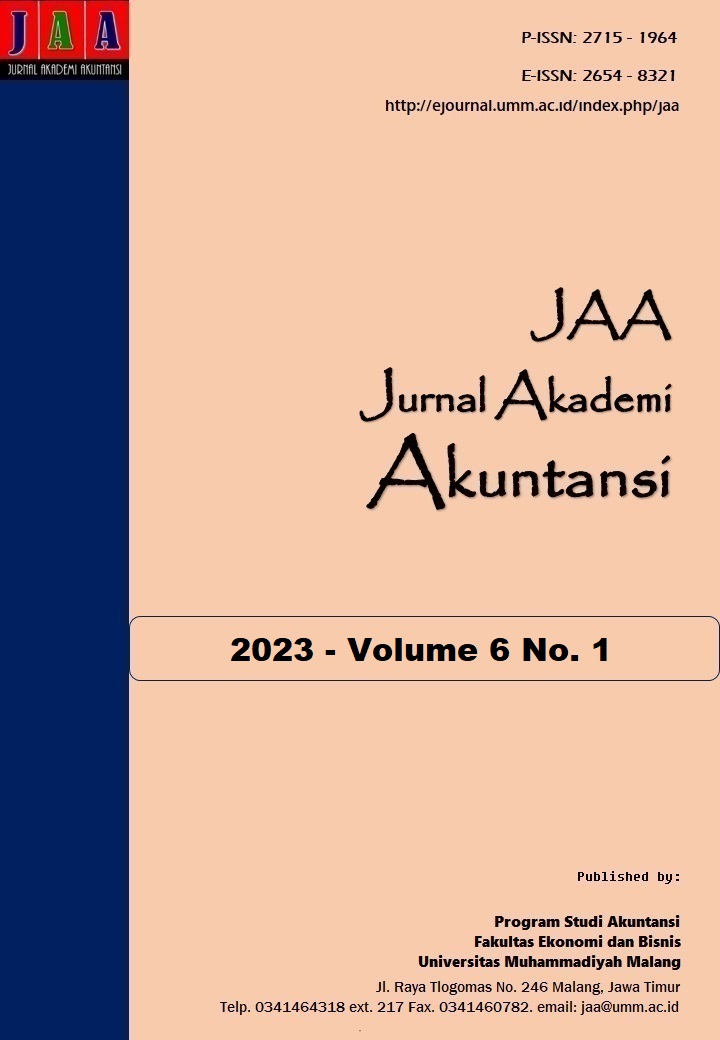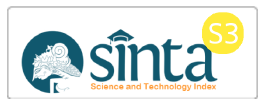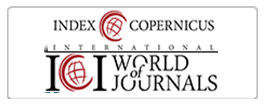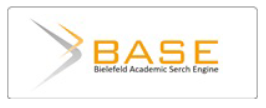Budaya Akuntansi Indonesia: Praktik Akuntansi Level Keluarga, Masyarakat, dan Bisnis
DOI:
https://doi.org/10.22219/jaa.v6i1.23637Keywords:
Accountability, Community Habits , Indonesian Accounting CultureAbstract
This study describes the accounting culture with the existence of financial cycles among Indonesian people. This research fosters the role of the philosophy of science to see accounting culture in community activities in general from its multi-paradigm perspective. There are various accounting cultures that are spread giving birth to a variety of accounting treatments that are applied in each culture. We make a qualitative systematic review as the basis for the method in this study. The results of the study show that the variety of accounting culture in Indonesia can be classified into three levels, namely the accounting culture at the family level, community level, and business level. The accounting culture that grows in Indonesia is more accountable in nature so it is not a formal object related to the recognition, measurement, and presentation of accounting information. The material object of Indonesian accounting culture is the customary practice of a society that has a social order. Systematics that are consistent and carried out continuously and passed down from generation to generation make the system a culture.
Downloads
References
Abdulkarim, M. E., Umlai, M. I., & Al-Saudi, L. F. (2022). Culture, language, and accounting reform: A new perspective on IPSAS implementation. Journal of Accounting and Organizational Change. https://doi.org/10.1108/JAOC-01-2022-0006
Adams, C. A., & Mueller, F. (2022). Academics and policymakers at odds: the case of the IFRS Foundation Trustees’ consultation paper on sustainability reporting. Sustainability Accounting, Management and Policy Journal, 13(6), 1310–1333. https://doi.org/10.1108/SAMPJ-10-2021-0436
Agustin, D. S. Y., Suarmini, N. W., & Prabowo, S. (2015). Peran keluarga sangat penting dalam pendidikan mental, karakter anak serta budi pekerti anak. Jurnal Sosial Humaniora, 8(1), 46.
Alexander, D., de Brébisson, H., Circa, C., Eberhartinger, E., Fasiello, R., Grottke, M., & Krasodomska, J. (2018). Philosophy of language and accounting. Accounting, Auditing and Accountability Journal, 31(7), 1957–1980. https://doi.org/10.1108/AAAJ-06-2017-2979
Anderson, S. (2007). The economics of dowry and brideprice. Journal of Economic Perspectives, 21(4), 151–174. https://doi.org/10.1257/jep.21.4.151
Ayadi, J. E., Damak, S., & Hussainey, K. (2020). The impact of conservatism and secrecy on the IFRS interpretation: The case of Tunisia and Egypt. Journal of Financial Reporting and Accounting, 19(2), 234–271. https://doi.org/10.1108/JFRA-01-2020-0016
Becker, G. S. (1991). A treatise on the family (Enlarged Edition). Havard University Press.
Bishai, D., & Grossbard, S. (2010). Far above rubies: Bride price and extramarital sexual relations in Uganda. Journal of Population Economics, 23(4), 1177–1187. https://doi.org/10.1007/s00148-008-0226-3
Chariri, A. (2011). Financial reporting practice as a ritual: Understanding accounting within institutional framework. Journal of Economics, Business and Accountancy Ventura, 14(1), 89–106.
Chen, X. (2011, June 23). Accounting for social spending escalation in Rural China. IAMO Forum 2011. http://web.cenet.org.cn/web/ecocxi/
Dahlan, L., Triyuwono, I., & Djamhuri, A. (2020). Why do MSMEs implement social responsibility? A study on the traditional Bugis fishing business in Indonesia. Russian Journal of Agricultural and Socio-Economic Sciences, 100(4), 10–16. https://doi.org/10.18551/rjoas.2020-04.02
Daldjoeni. (1980). Masalah kependudukan dalam fakta dan angka. Penerbit Alumni Bandung.
Espa, V. (2016). Rancangan sistem informasi akuntansi keluarga. Jurnal Audit Dan Akuntansi Fakultas Ekonomi Dan Bisnis Universitas Tanjungpura, 5(1), 19–48. https://doi.org/DOI:10.26418/jaakfe.v5i01.22806
Fox, A., Hannah, G., Helliar, C., & Veneziani, M. (2013). The costs and benefits of IFRS implementation in the UK and Italy. Journal of Applied Accounting Research, 14(1), 86–101. https://doi.org/10.1108/09675421311282568
Grant, M. J., & Booth, A. (2009). A typology of reviews: An analysis of 14 review types and associated methodologies. Health Information and Libraries Journal, 26(2), 91–108. https://doi.org/10.1111/j.1471-1842.2009.00848.x
Gunadi, I. H., Sutarno, H. T., & Lutfiah, A. (1995). Wujud, arti, puncak-puncak kebudayaan lama dan asli bagi masyarakat pendukungnya. Departemen Pendidikan dan Kebudayaan.
Hancock, G. (1979). Home budgeting. Oyez Publishing Ltd.
Henny, O., Hasibuan, T., & Akuntansi, J. (2021). Penerapan akuntansi dalam perspektif budaya Jawa pada pedagang nasi jinggo di Denpasar. Jurnal Inovasi Penelitian, 2(1), 149–159.
Intezari, A., Pauleen, D. J., & Taskin, N. (2022). Towards a foundational KM theory: a culture-based perspective. Journal of Knowledge Management, 26(6), 1516–1539. https://doi.org/10.1108/JKM-03-2021-0249
Iturbide, M. I., Gutiérrez, V., Munoz, L., & Raffaelli, M. (2019). “They Learn to Convivir”: Immigrant Latinx Parents’ perspectives on cultural socialization in organized youth activities. Journal of Adolescent Research, 34(3), 235–260. https://doi.org/10.1177/0743558418777827
Jannah, S., Mufidah, & Suwandi. (2021). Panaik money of Bugis’ customary marriage in the perspective of islamic law and positive law in Indonesia. Journal of Transcendental Law, 3(2), 98–111. https://doi.org/10.23917/jtl.v3i2.17375
Koetjaraningrat. (1985). Pengantar ilmu antropologi. Aksara Baru.
Komori, N. (2007). The “hidden” history of accounting in Japan: A historical examination of the relationship between Japanese women and accounting. Accounting History, 12(3), 329–358. https://doi.org/10.1177/1032373207079037
Komori, N. (2012). Visualizing the negative space: Making feminine accounting practices visible by reference to Japanese women’s household accounting practices. Critical Perspectives on Accounting, 23(6), 451–467. https://doi.org/10.1016/j.cpa.2012.04.006
Kwarteng, A., & Aveh, F. (2018). Empirical examination of organizational culture on accounting information system and corporate performance: Evidence from a developing country perspective. Meditari Accountancy Research, 26(4), 675–698. https://doi.org/10.1108/MEDAR-01-2018-0264
Linnenluecke, M. K., Birt, J., & Griffiths, A. (2015). The role of accounting in supporting adaptation to climate change. Accounting and Finance, 55(3), 607–625. https://doi.org/10.1111/acfi.12120
Manehat, B. Y., Irianto, G., & Purwanti, L. (2019a). The ownership rights of the assets exchangeed in brideprice (Belis) accounting practices in Belu. Russian Journal of Agricultural and Socio-Economic Sciences, 88(4), 184–193. https://doi.org/10.18551/rjoas.2019-04.24
Manehat, B. Y., Irianto, G., & Purwanti, L. (2019b). Payment system and brideprice recording in Belu-Indonesia. International Journal of Multicultural and Multireligious Understanding, 6(2), 303. https://doi.org/10.18415/ijmmu.v6i2.718
Manurung, D., & Sinton, J. (2013). Urgensi peran akuntansi dalam rumah tangga (Studi fenomenologis pada dosen-dosen akuntansi di Universitas Widyatama Bandung. Jurnal Ilmiah Akuntansi Dan Humanika , 3(1), 892–908.
Mastorat. (2022). Aktualisasi Dowry Law Sadompo Uma pada perkawinan Suku Mbojo. Jurnal Ilmiah Mandala Education (JIME), 8(1), 562–569. https://doi.org/DOI: 10.36312/jime.v8i1.2719/
Megawangi, R. (2003). Pendidikan karakter untuk membangun masyarakat Madani. IPPK Indonesia Heritage Foundation. E-print.umm.ac.id
Musdalifa, E., & Mulawarman, A. D. (2019). Budaya Sibaliparriq dalam praktik household accounting. Jurnal Akuntansi Multiparadigma, 10(3), 413–432. https://doi.org/10.21776/ub.jamal.2019.10.3.24
Nijam, H. M., & Jahfer, A. (2018). IFRS adoption and value relevance of accounting information: Evidence from a developing country. Global Business Review, 19(6), 1416–1435. https://doi.org/10.1177/0972150918794571
Oduro, K. J., Seidu, A. A., Ameyaw, E. K., Sambah, F., Ahinkorah, B. O., Budu, E., Appiah, F., & Baatiema, L. (2022). Bride price payment and justification of sexual violence among women in Ghana. Journal of Interpersonal Violence, 37(9–10), NP6284–NP6300. https://doi.org/10.1177/0886260520966678
Paranoan, S. (2015). Akuntabilitas dalam upacara adat pemakaman. Jurnal Akuntansi Multiparadigma JAMAL, 6(2), 214–224.
Pratama, D., Prastiwi, I., & Ardianti, R. (2019, February 14). Accounting for fishermen tribe using (An ethnographic approach). Proceedings of the 1st International Conference on Business, Law And Pedagogy, ICBLP. https://doi.org/10.4108/eai.13-2-2019.2286070
Prayanthi, I., Maramis, J. B., E Saerang, D. P., H Dotulong, L. O., Soepeno, D., Prayanthi, I., Barens Maramis, J., Paul Elia Saerang, D., Otto Herman Dotulong, L., & Soepeno, D. (2022). Phenomenology: Meaning of financial management family version of accounting academic. Jurnal EMBA, 10(2), 1050–1059.
Rachmi, N. H., & Sawarjuwono, T. (2020). Malem songolikur: Menyingkap makna harga di balik tradisi lelang bandeng di Gresik. E-Jurnal Akuntansi, 30(5), 1297. https://doi.org/10.24843/eja.2020.v30.i05.p18
Raharjo, A. P., & Kamayanti, A. (2014). Household accounting values and implementation: An interpretive study. Simposium Nasional Akuntansi.
Rahayu Yudi, S. (2015). Uang Nai’: Antara cinta dan gengsi. Jurnal Akuntansi Multiparadigma JAMAL, 6(2), 224–236. http://dx.doi.org/10.18202/jamal.2015.08.6018
Ramlugun, V. G., Ramdhony, D., & Poornima, B. (2016). An evaluation of household accounting in Mauritius. International Journal of Accounting and Financial Reporting, 6(2), 62. https://doi.org/10.5296/ijafr.v6i2.9840
Ratna, S., & Damayanti, A. (2015). Story of bride price: Sebuah kritik atas fenomena uang panaik suku Makassar. Jurnal Akuntansi Multiparadigma JAMAL, 6(1), 79–98. http://dx.doi.org/10.18202/jamal.2015.04.6007
Ratnaningsih, M., Wibowo, H. R., Goodwin, N. J., Rezki, A. A. K. S., Ridwan, R., Hadyani, R. N., Minnick, E., Ulum, D. F., Kostaman, T. K., & Faizah, S. N. (2022). Child Marriage Acceptability Index (CMAI) as an essential indicator: an investigation in South and Central Sulawesi, Indonesia. Global Health Research and Policy, 7(1), 32. https://doi.org/10.1186/s41256-022-00252-4
Rich, L. L., Rich, J., & Hair, J. (2018). The influence of organizational culture on how we define and pursue goals: The value of regulatory focus. Journal of Organizational Effectiveness, 5(3), 259–277. https://doi.org/10.1108/JOEPP-03-2018-0017
Rizal, U., & Latifah, S. W. (2020). Refleksi nilai ekonomis dan non ekonomis pada pengelolaan keuangan usaha kepemilikan sapi kerapan masyarakat Madura [Thesis, Universitas Muhammadiyah Malang]. E-print umm.ac.id
Said, I. (2022). The portrayal of Islamic values and perspective of Bugis – Makassar culture in the conception of dowry for people in Bangkala village, Makassar, South Sulawesi. Jurnal Adabiyah, 22(1), 127–139.
Sekaran, U., & Roger, B. (2016). Research Methods for Business: A Skill-Building Approach (Seventh Edition). John Wiley & Sons Ltd.
Smith, C. (2022). The role of audit styles in financial statement comparability: South African evidence. International Journal of Auditing, 26, 572–589. https://doi.org/10.1111/ijau.12296
Snyder, H. (2019). Literature review as a research methodology: An overview and guidelines. Journal of Business Research, 104, 333–339. https://doi.org/10.1016/j.jbusres.2019.07.039
Soni, S. (2020). Institution of Dowry in India: A Theoretical Inquiry. Societies Without Borders, 14(1), 1–17.
Suryaningrat, R. D., Mangunsong, F. M., & Riantoputra, C. D. (2020). Teachers’ aggressive behaviors: what is considered acceptable and why? Heliyon, 6(10). https://doi.org/10.1016/j.heliyon.2020.e05082
Thalib, M. A. (2022). Motoliango sebagai wujud akuntansi di upacara Tolobalango Gorontalo. Jurnal Bisnis Dan Akuntansi, 24(1), 27–48. http://jurnaltsm.id/index.php/JBA
Thalib, M. A., & Monantun, W. P. (2022). Konstruksi praktik akuntansi Tolobalango: Studi Etnometodologi Islam. EL Muhasaba: Jurnal Akuntansi (e-Journal), 13(2), 85–97.
Triyuwono, I. (2015). Akuntansi syariah: Perspektif, metodologi, dan teori. PT RajaGrafindo Persada.
Walker, S. P., & Carnegie, G. D. (2007). Budgetary earmarking and the control of the extravagant woman in Australia, 1850-1920. Critical Perspectives on Accounting, 18(2), 233–261. https://doi.org/10.1016/j.cpa.2005.10.003
Walker, S. P., & Llewellyn, S. (2000). Accounting at home: some interdisciplinary perspectives. Auditing & Accountability Journal, 13(4), 951–3574. https://doi.org/10.1108/09513579910270129a
Wibisono, Y. P., & Setyohadi, D. B. (2017). Accounting information system for nonprofit organization based on PSAK 45 standards. 2nd International Conferences on Information Technology, Information Systems and Electrical Engineering (ICITISEE), 136–140.
Wijekoon, N., Samkin, G., & Sharma, U. (2022). International financial reporting standards for small and medium-sized entities: a new institutional sociology perspective. Meditari Accountancy Research, 30(5), 1265–1290. https://doi.org/10.1108/MEDAR-06-2020-0929
Yuliana, R., Setiawan, A. R., & Auliyah, R. (2020). Akuntansi keluarga sakinah sebagai manifestasi pengelolaan keuangan rumah tangga syariah. Jurnal Akuntansi Multiparadigma, 11(3), 479–499. https://doi.org/10.21776/ub.jamal.2020.11.3.28
Zulaikha, S., Nurjanah, S., Faizin, adil, & Salim Ferliadi, A. (2022). Dowry function in perpective of Mubadalah. Journal of Sharia, Tradition, and Modernity, 2(1), 1–12. http://ejournal.radenintan.ac.id/index.php/smart
Downloads
Published
Issue
Section
License
Copyright (c) 2023 Risky Budianto, Sri Wahjuni Latifah, Novrys Suhardianto, Sri Iswati

This work is licensed under a Creative Commons Attribution-NonCommercial-ShareAlike 4.0 International License.
Jurnal Akademi Akuntansi is licensed under a Creative Commons Attribution-NonCommercial-ShareAlike 4.0 International License.
Authors who publish with this journal agree to the following terms:
- Authors retain copyright and grant the journal right of first publication with the work simultaneously licensed under a Creative Commons Attribution-NonCommercial-ShareAlike 4.0 International License that allows others to share the work with an acknowledgment of the work's authorship and initial publication in this journal.
- Authors are able to enter into separate, additional contractual arrangements for the non-exclusive distribution of the journal's published version of the work (e.g., post it to an institutional repository or publish it in a book), with an acknowledgment of its initial publication in this journal.
- Authors are permitted and encouraged to post their work online (e.g., in institutional repositories or on their website) prior to and during the submission process, as it can lead to productive exchanges, as well as earlier and greater citation of published work (See The Effect of Open Access).
Jurnal Akademi Akuntansi dilisensikan di bawah lisensi Creative Commons Attribution-NonCommercial-ShareAlike 4.0 International.
Penulis yang menerbitkan artikel di jurnal ini menyetujui ketentuan berikut:
- Penulis mempertahankan hak cipta dan memberikan hak jurnal atas publikasi pertama dengan karya yang secara serentak dilisensikan di bawah Lisensi Pengaitan Creative Commons yang memungkinkan orang lain untuk berbagi karya dengan pengakuan atas karya penulis dan publikasi awal dalam jurnal ini.
- Penulis dapat masuk ke dalam pengaturan kontrak tambahan yang terpisah untuk distribusi non-eksklusif versi karya jurnal yang diterbitkan (misalnya, mempostingnya ke repositori institusional atau mempublikasikannya dalam sebuah buku), dengan pengakuan publikasi awalnya di jurnal ini.
- Penulis diizinkan dan didorong untuk memposting pekerjaan mereka secara online (misalnya, di repositori institusional atau di situs web mereka) sebelum dan selama proses pengajuan, karena dapat mengarah pada pertukaran produktif, serta kutipan pekerjaan sebelumnya dan yang lebih besar (Lihat Pengaruh Akses Terbuka).
























